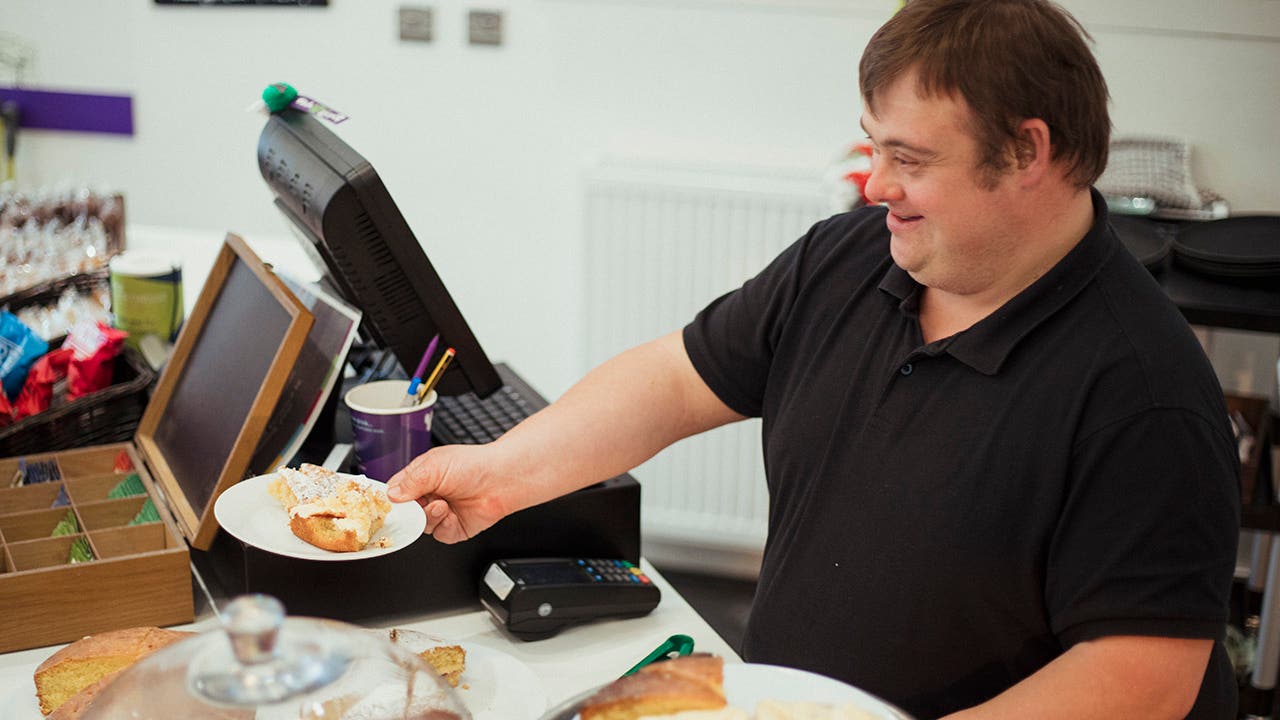How much does a POS system cost?

The Bankrate promise
At Bankrate we strive to help you make smarter financial decisions. While we adhere to strict , this post may contain references to products from our partners. Here's an explanation for . The content on this page is accurate as of the posting date; however, some of the offers mentioned may have expired. Terms apply to the offers listed on this page. Any opinions, analyses, reviews or recommendations expressed in this article are those of the author’s alone, and have not been reviewed, approved or otherwise endorsed by any card issuer.
If you run a retail business where you accept cash or card payments, chances are you’ll need a Point-of-Sale (POS) system too. These systems allow you to process payments from your customers and they’re generally composed of two parts: POS software and POS hardware. If you run an online business you’ll only need the software portion, but if you make your sales in person you’ll need both.
The cost of a POS system varies among different POS providers depending on what types of hardware you buy, your sales volume, the industry your retail business operates in and more. We’ll break it down to help you figure out what you need and how much it’ll cost.
- The cost of a one-register POS system varies widely from around $30 to $230 per month (Shopify).
- The cost of a POS system for the first year — including a monthly software subscription and initial hardware setup — ranges from $1,200 to $6,500, depending on the size of the business (Tech.co).
- Once you’re set up, the cost of a POS system ranges from $600 to $1,200 per year (Tech.co).
- 85% of small business owners want to grow their online business presence (Digital Transactions).
- 30% of retailers planned to replace their POS software in 2020 (Digital Transactions).
POS costs at a glance
On the surface, getting paid as a business owner seems straightforward. You have something to sell and customers who are willing to pay you for it. But with a variety of channels to sell through, multiple payment methods to accommodate and ever-advancing technology, things aren’t quite so simple.
If you’re selling online, you’ll need software that allows you to accept digital payments by acting as an interface between your store and the customer’s bank. You’ll need that too if you’re selling in the physical space, but you’ll also need POS equipment that lets you handle cash and cards. If it’s very technical equipment, you may need to hire someone to install it.
And as with most things in life, there are plenty of optional bells and whistles that can help you run your business more smoothly — for an extra charge, of course.
We compared costs across popular brands, including Square, Shopify, Clover, Toast and others, to create typical price ranges for various elements of POS systems.
| POS system components | Typical price range |
|---|---|
| Software | $29 – $300 |
| Hardware | $0 – $2,000 |
| Installation | $0 – $700 |
| Payment processing | 1.5% – 3.5% per credit card transaction |
| Add-Ons and integrations | Varies |
Now, we’ll detail some of the specifics that comprise each component listed above.
Cost of POS software
The range of POS software costs is pretty incredible, and for good reason — some businesses can get by with basic software, while others require sophisticated, specialized tools. On the low end, some companies like Toast offer POS software for free, although you’ll usually pay higher payment processing fees. On the high end, companies like Shopify charge as much as $299 per month or more in order to get the lowest payment processing fees.
Starting with a free or cheap POS software subscription is a good way to grow your business. As your sales grow, you can upgrade to more expensive plans that can add helpful tools like sales reporting, inventory management, loyalty programs, gift card programs and more.
In addition, you’ll need to make a decision about which type of POS system you want, because that’ll dictate both the hardware and software you’ll need:
- Legacy POS: This is the old-school cash register or POS computer. It’s expensive, requires professional installation and maintenance and isn’t connected to the internet, so you’ll need to be on-site for business accounting purposes. On the plus side, that means data breaches are unlikely and you can still use it if the internet goes out.
- Cloud-based POS: These systems often look like iPads and are more common nowadays. Sales data is stored in the cloud which means you can access it anywhere and you’re less likely to lose it, but it can be hacked. They’re cheaper to operate, requiring little to no maintenance or installation and you can customize it more easily for your business with handy integrations.
- Hybrid POS: This blends together an older-style POS computer with the ability to connect to the internet. In an internet outage, it’ll store the sales data on the computer until it can reconnect again.
POS fees for credit card processing
It’s important for most businesses to accept credit cards, but doing so comes with a cost.
There’s a surprisingly convoluted series of connections that happen in the background when your customer swipes their card, and that’s why POS systems charge you money to accept credit card payments.
Most POS systems will charge you a set fee per transaction plus a percentage of your sale amount. That percentage can differ depending on the type of credit card transaction. Card-present transactions (when the customer swipes, dips or taps their card) often have smaller fees than card-not-present transactions (when you use a card on file or manually key in a card number).
Most POS providers offer plans with higher monthly subscription fees but lower payment processing costs that you can scale up to as your business sales volume grows.
| POS system | Payment processing cost |
|---|---|
| Toast | 2.49% – 2.99% plus $0.15, depending on plan |
| Shopify | 2.4% – 2.9% plus $0.00 – $0.30 depending on plan and transaction type |
| Square | 1% – 3.5% plus $0.10 – $0.30 depending on transaction type |
| Clover | 2.3% – 3.5% plus $0.10 depending on plan and transaction type |
| Lightspeed | 2.6% plus $0.10 – $0.30 depending on transaction type |
POS hardware costs
As POS software has improved beyond the floppy disk days, so has POS hardware, and the range of options is extensive.
On the low end, you may be able to get started with just an app on a smartphone or iPad that you already have. On the high end, you might need to buy lots of equipment like POS computers, cash drawers, turntable displays, card readers, receipt printers and more.
Here’s how much you can expect to pay for POS system hardware based on average prices with popular providers.
| POS system equipment | Typical price range |
|---|---|
| Terminal | $200 – $6,500 or more |
| Cash drawer | $150 |
| Card reader | $50 |
| Barcode scanner | $200 – $350 |
| Receipt printer | $300 – $400 |
| Customer facing display | $150 – $800+ |
Cost of popular POS systems
Most POS system providers offer a range of options that wrap together hardware, software and processing costs all together for you. Some providers are even geared toward the needs of certain industries, such as Toast, which caters to the restaurant industry.
| Toast | Shopify | Square | Clover | Vend | Lightspeed | |
|---|---|---|---|---|---|---|
| Type of POS | Restaurant | Retail | Retail | Retail | Retail | Retail |
| POS hardware costs | $0 – $799 | $29 – $399 | $0 – $799 | $60 – $175 per month | $89 – $269 per month | $89 – $269 per month |
| POS software costs | $0 – $69 per month | $29 – $299 per month | $0 – $29 or more per month | Included in price | Included in price | Included in price |
| POS installation fee | $0 | n/a | n/a | n/a | n/a | n/a |
| Contract length | 2 years | n/a | n/a | 3 years | n/a | None |
| Average monthly total cost | $0 – $799 | $58 – $698 | $149 – $848 | $60 – $175 | $89 – $269 | $89 – $269 |
Getting started with a POS system can be expensive. It’s typically best to pay for new business investments out of your business savings, but if that’s not possible, financing it with a business credit card can be a good option if you prioritize paying it back as soon as you’re able.
Factors that impact your POS system costs
Figuring out the cost of a POS system for your business isn’t as straightforward as you might think. The cost can vary depending on several factors.
- Sales volume: The more sales you make, the cheaper your payment processing fees may be with some POS providers.
- Hardware type: More complex POS systems will cost more money upfront.
- Integrations: Some POS systems allow you to use different add-ons, such as detailed reporting and customer loyalty discounts, which may increase your cost.
FAQ
-
Many of the most popular POS system providers, including Toast and Square, offer free POS software for low-volume online retailers, although you’ll typically pay higher processing fees.
-
At a minimum, a POS system allows business owners to accept customer payments for purchases they make. A POS system can be entirely digital for online businesses, have POS hardware components for brick-and-mortar businesses, or have bits of both. Some POS systems include other helpful tools, like tracking employee hours, inventory, customer relationship management (CRM) programs and more.
-
A POS system is composed of two parts. POS software allows small businesses to process payments made with credit, debit or gift cards. POS hardware allows businesses to accept payments in person at a cash register or checkout stand. Not all businesses need POS hardware — if your business operates entirely online, for example, there’s no need to have POS hardware that lets you swipe a credit card.
-
Related Articles



